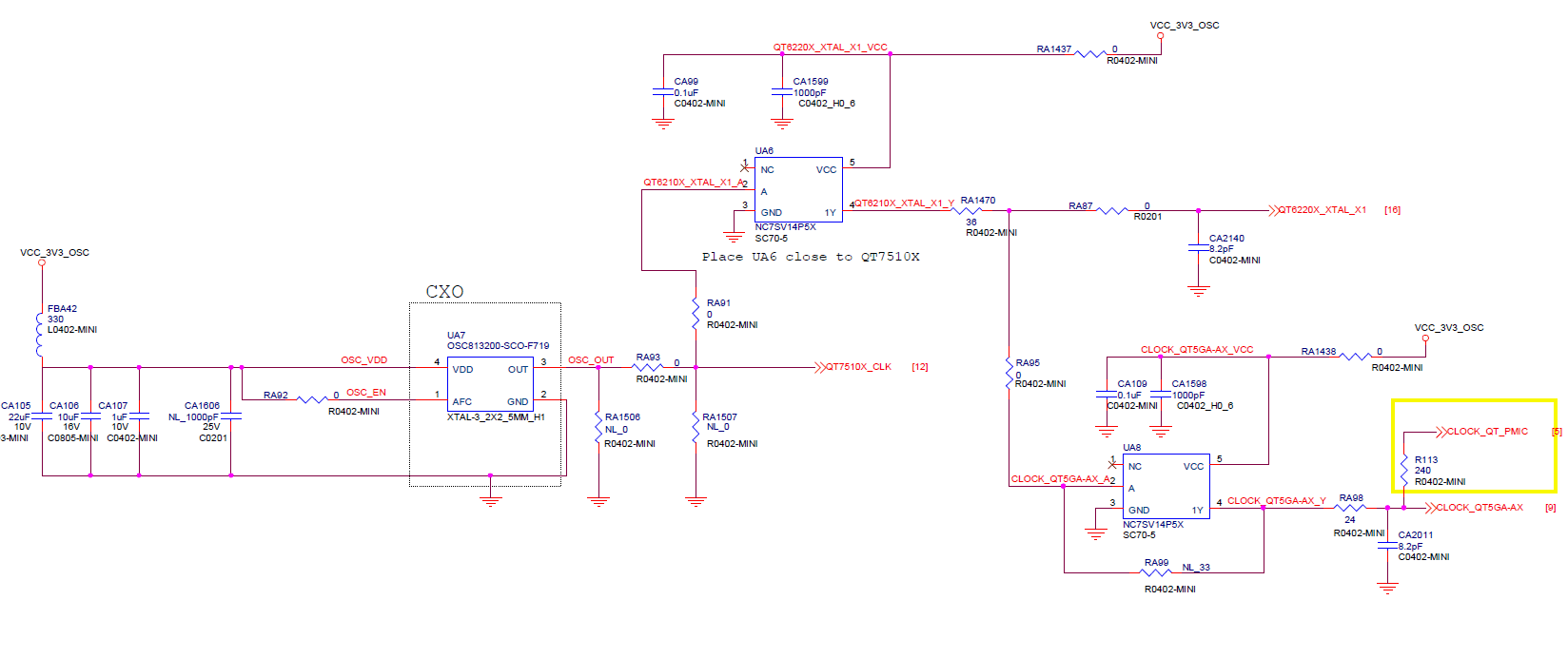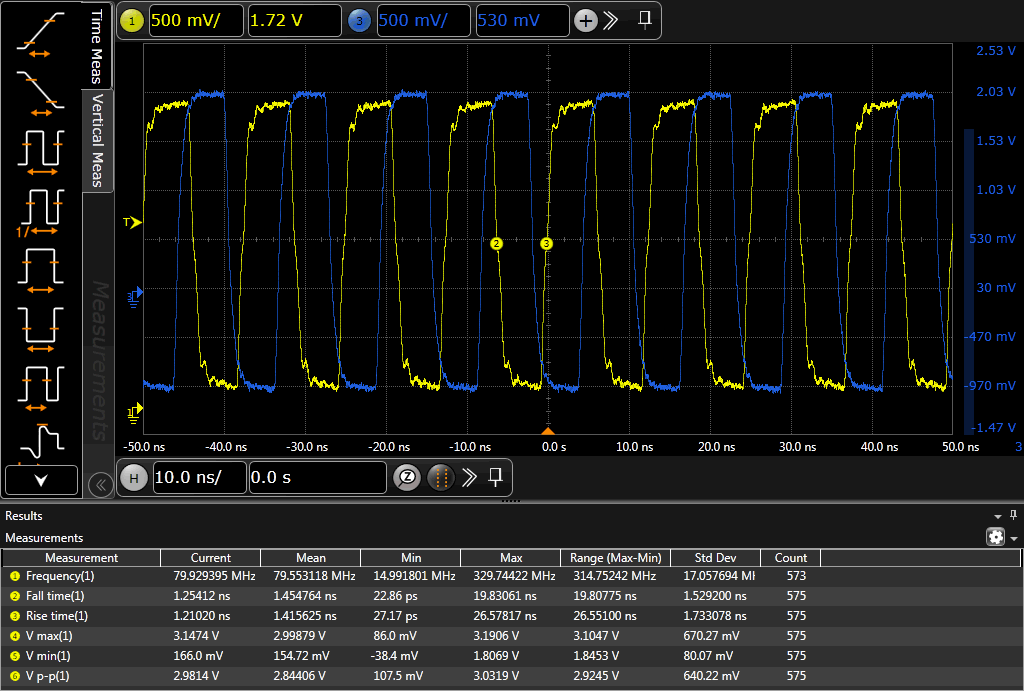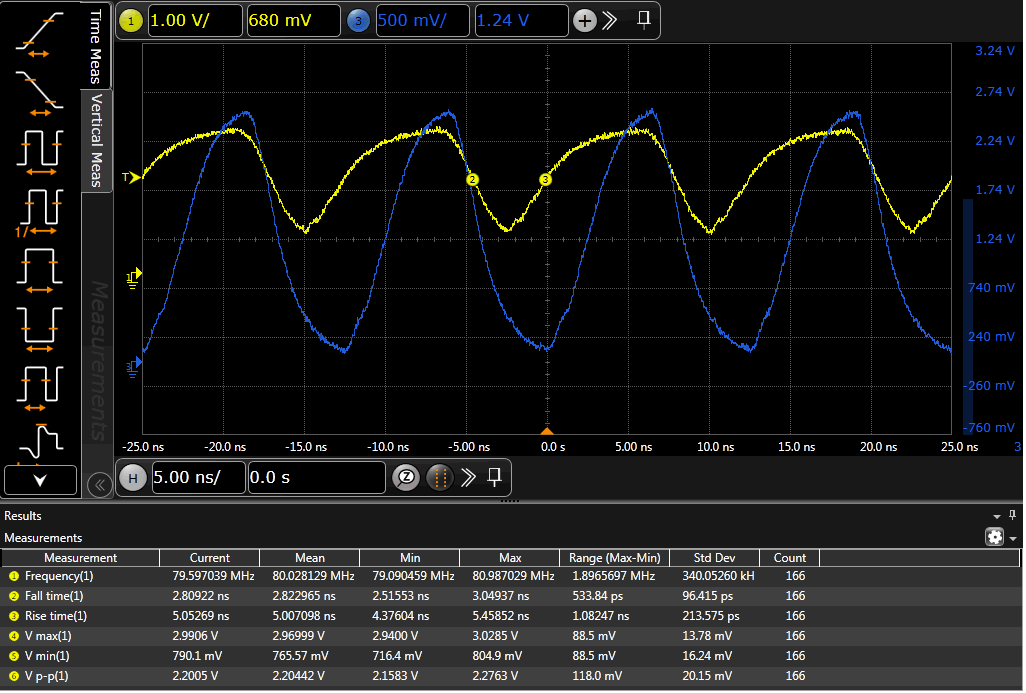Hi Expert,
We are replacing NC7SV14P5X with p2p SN74AUP1G14 but the input/output signals looks distorted. Would you please have a look and let us know if any suggestions?
Original input(Blue)/output(Yellow)waveform of NC7SV14P5X
input(Blue)/output(Yellow) waveform of SN74AUP1G14
Thanks,
Allan





